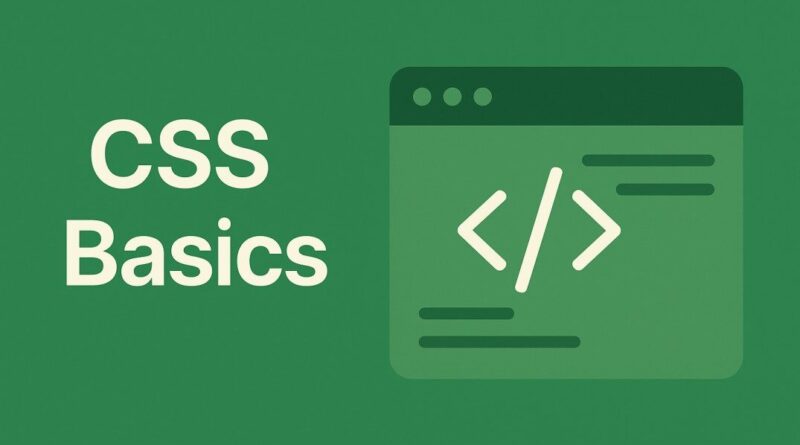CSS – CSS Fundamentals: The Absolute Basics – Basic Selectors
CSS, or Cascading Style Sheets, is the bedrock of beautiful web design. It’s what transforms a plain HTML document into a visually engaging experience. If you’re dipping your toes into web development, mastering CSS fundamentals, especially selectors, is your absolute first step. Think of selectors as your way of pointing to specific HTML elements and telling them, “Hey, you! I want to style you like this.”
Let’s break down the basic, yet incredibly powerful, CSS selectors:
1. The Element (Type) Selector: Styling by Tag Name
Imagine you have a document with several paragraphs, headings, and divisions. Instead of styling each one individually, you can use the element selector. This selector targets all instances of a specific HTML tag.
p: Want all your paragraphs to have blue text? Simply usep { color: blue; }. This will instantly apply the style to every single<p>tag on your page.h1: Make all your main headings stand out withh1 { font-size: 48px; text-align: center; }.div: If you want to give a default background to all your<div>elements, you’d usediv { background-color: lightgray; padding: 20px; }.
This is incredibly efficient for applying broad styles across your website, ensuring consistency and saving you a ton of time. It’s your go-to for setting a baseline look for common HTML elements.
2. The Class Selector: Grouping Elements for Unique Styles
What if you don’t want all paragraphs to be blue? Maybe only some of them need a special highlight. That’s where class selectors come in! Classes allow you to group multiple HTML elements, regardless of their tag type, and apply a specific style to that group.
.my-class: In your HTML, you’d addclass="my-class"to the elements you want to style. For example,<p class="my-class">This paragraph is special.</p>and<div class="my-class">This div is also special.</div>. Then, in your CSS, you’d define the style like this:.my-class { color: green; font-weight: bold; }. Both the paragraph and the div with this class would adopt these styles.
Classes are immensely flexible and are used extensively in modern web development. They empower you to create reusable style blocks that can be applied to any element, fostering modular and maintainable code. Think of them as custom labels you can attach to elements to give them a distinct appearance.
3. The ID Selector: Pinpointing a Single, Unique Element
Sometimes, you have a very specific element on your page that needs a completely unique style – something that will only ever appear once. For these scenarios, the ID selector is your best friend. IDs are meant to be unique identifiers for a single element within an entire HTML document.
#my-id: In your HTML, you’d give an element a unique ID like<header id="main-header">Your Amazing Website</header>. Then, in your CSS, you target it with a hash symbol:#my-id { background-color: darkblue; color: white; padding: 30px; }.
Because IDs are unique, they have a higher “specificity” than classes or element selectors. This means if there’s a conflict in styles, the ID selector’s style will usually win. Use IDs sparingly, primarily for major structural elements that truly stand alone.
4. The Universal Selector: The Wildcard for Global Styling
The universal selector, denoted by an asterisk (*), is the ultimate wildcard. It targets every single element on your HTML page. While powerful, it should be used with caution, as it can override default browser styles and lead to unexpected results if not handled carefully.
*: A common use case for the universal selector is to reset default margins and padding across all elements:* { margin: 0; padding: 0; box-sizing: border-box; }. This is a popular technique to ensure consistent spacing across different browsers.
The universal selector is fantastic for establishing very broad, global styles, but remember that its widespread application means it can sometimes be less performant and may require more specific rules to override its effects.
Mastering the Basics: Your Gateway to Web Design
Understanding these fundamental CSS selectors – element, class, ID, and universal – is not just about memorizing syntax; it’s about grasping the core logic of how CSS interacts with your HTML. As you build more complex websites, you’ll find yourself combining these selectors, leveraging their strengths to create stunning and responsive designs.
So, start experimenting! Open your code editor, create a simple HTML file, and play around with these selectors. See how they transform your text, images, and layouts. The more you practice, the more intuitive CSS will become, unlocking a world of creative possibilities for your web design journey. Happy coding!



